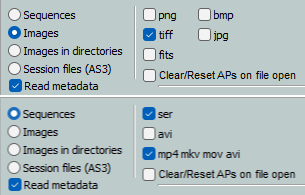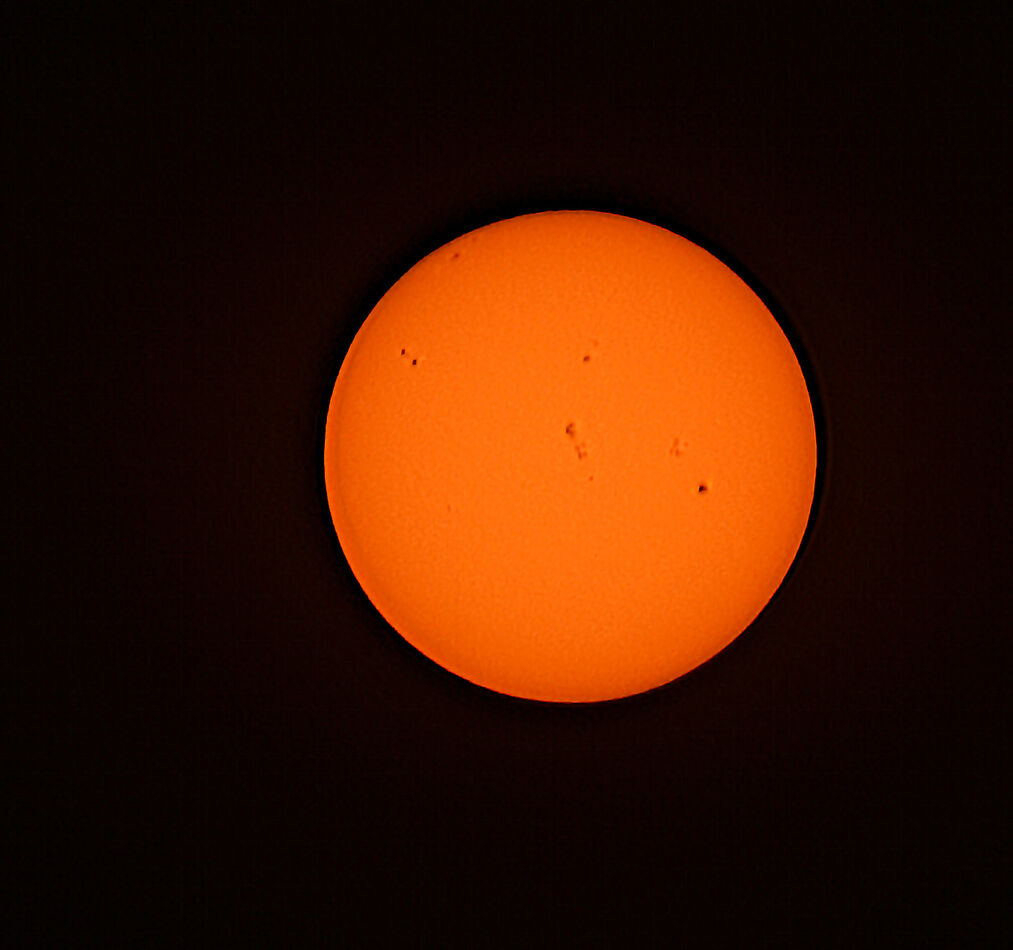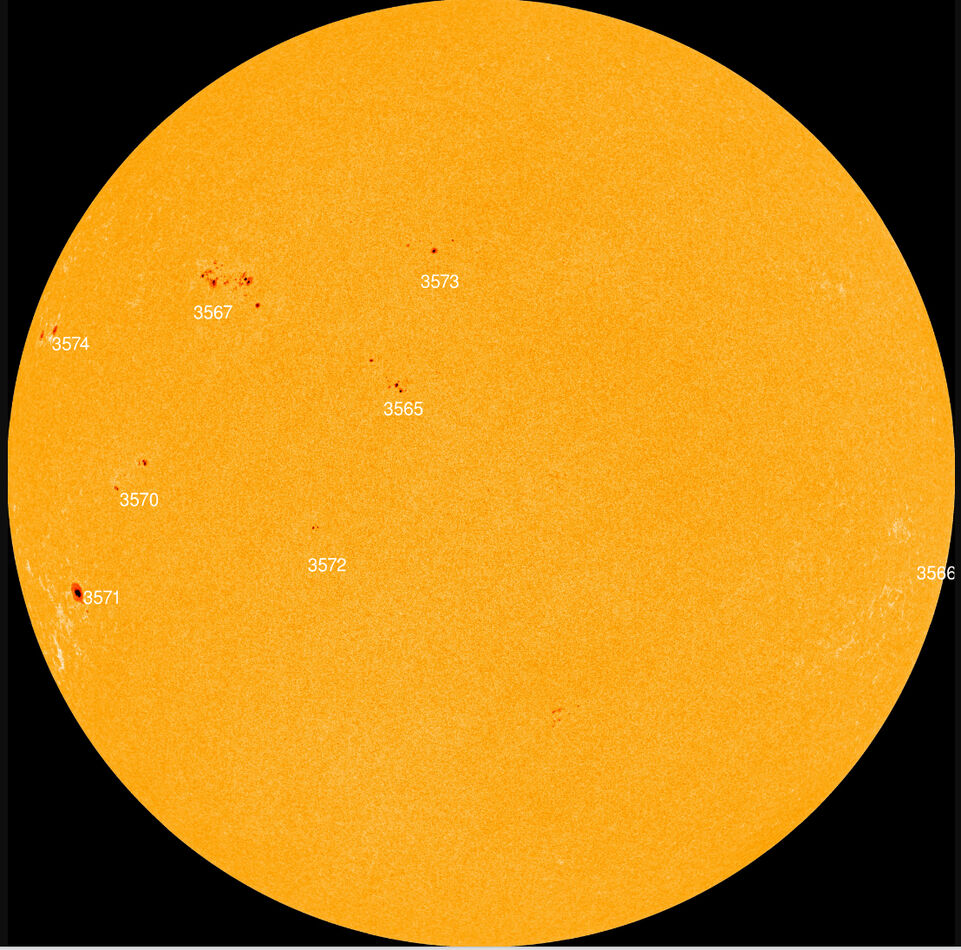The Sun Part 2
Jan 31, 2024 23:06:19 #
Howard5252 wrote:
Alternative to what? Are you suggesting not to use a tripod?
I will be doing some testing and getting practice - this is a completely new niche for me.
I will be doing some testing and getting practice - this is a completely new niche for me.
Most serious astrophotographers shoot video when imaging the Moon, Sun or Planets.
Actually with the Nikon Z9 you can shoot 10-bit 4:2:2 H.265 in 8K. This would be close to ideal for Lunar/Solar imaging.
With any target being shot through a rolling and rocking atmosphere it is best to shoot a huge number of images and select the best one(s) for processing (known as 'Lucky Imaging'). Hires video is made for this. Shoot a minute of video and you have about 1800 'images' to choose from. Software like AutoStakkert will analyze your video, determine the quality of each frame and stack the best frames you want to combine into the final image. With my Sony A7R V I normally shoot 4-5 one minute 8K videos with a refocus between each, run AutoStakkert on each video, save the best frame from each video then run AutoStakkert on the 4-5 best frames to obtain the best of the best for final postprocessing. In other words I'm getting the best image from essentially 7200-9000 images. With luck I'll get a few images when the atmosphere is fairly stable, i.e.; lucky imaging.
bwa
Feb 1, 2024 08:45:32 #
bwana wrote:
Most serious astrophotographers shoot video when i... (show quote)
I have never shot video, I'll have to think about it. In the meantime I sent a note to Stakkert asking if their program will handle NEF files.
Feb 1, 2024 13:32:15 #
Reuss Griffiths
Loc: Ravenna, Ohio
Howard5252 wrote:
Alternative to what? Are you suggesting not to use a tripod?
I will be doing some testing and getting practice - this is a completely new niche for me.
I will be doing some testing and getting practice - this is a completely new niche for me.
Yes, I'm suggesting not using a tripod. Set your camera to manual mode with auto focus on. Sun image is bright enough for autofocus to work well. The rule of thumb for hand held is to use a shutter speed that is as fast as or faster than 1/ focal length (mm). If you are using a 600 mm lens, then you need a shutter speed of 1/800 or 1/1000. If you select camera conditions to get a reasonable exposure (yellow to orange disc) you can do this hand- held which is a lot more convenient. Using your lens with a wide-open aperture is acceptable since you are essentially focused at infinity and depth of field is not significant. A high ISO may produce noise in the dark areas but that's not what you're interested in, just the surface of the sun. You can check this out easily enough, just go outside on any sunny day and give it a try.
I'm going to PM you an image I made from the eclipse in 2017 which has a partial eclipse image with sunspots done hand-held.
Feb 1, 2024 13:32:50 #
Howard5252 wrote:
I have never shot video, I'll have to think about it. In the meantime I sent a note to Stakkert asking if their program will handle NEF files.
My info on AutoStakkert file formats comes from the import screen in AS 4.0 as shown below. I can't confirm it will work with MP4/MOV video files, i.e.: I haven't tried using them.
Almost any other compressed video file can be used by preprocessing it using FFMPEG. Info on FFMPEG can be found at: https://ffmpeg.org/about.html
Personally I use PPIP (https://pipp.software.informer.com/) to convert my Sony .MP4 videos to uncompressed .AVI format prior to using AutoStakkert. PIPP has a lot of other features that I like and use.
bwa

Feb 1, 2024 13:45:34 #
Reuss Griffiths
Loc: Ravenna, Ohio
bwana wrote:
Most serious astrophotographers shoot video when i... (show quote)
I just recommended shooting handheld manual with high shutter speed. Not sure what the effective "shutter speed" is for video but suspect it's not fast enough to freeze the image so that atmospheric turmoil is not an issue therefore requiring a tripod.
Feb 1, 2024 13:49:56 #
Reuss Griffiths
Loc: Ravenna, Ohio
bwana wrote:
Actually his images showed four sunspot areas and that is all that were present that day.
bwa
bwa
I only saw two and they were very small but I may have missed others. Typical sunspots are larger than these and most of them appear in pairs. The sun has been very active lately with large multiple sunspots fairly common.
Feb 1, 2024 14:01:39 #
Reuss Griffiths wrote:
I just recommended shooting handheld manual with high shutter speed. Not sure what the effective "shutter speed" is for video but suspect it's not fast enough to freeze the image so that atmospheric turmoil is not an issue therefore requiring a tripod.
The idea of shooting video is not necessarily to freeze the image but to catch a few frames when the atmosphere is relatively stable, i.e.: lucky imaging. The process also works when shooting distant mountains/objects with a telephoto lens on Earth.
The effective shutter speed of video is about 1/30th second. You definitely require a tripod. It also helps to insure the frames are close to aligned when you process the video, particularly if you plan on stacking a few of the better frames.
bwa
Feb 1, 2024 14:05:55 #
Reuss Griffiths wrote:
I only saw two and they were very small but I may have missed others. Typical sunspots are larger than these and most of them appear in pairs. The sun has been very active lately with large multiple sunspots fairly common.
That is very true and getting 'busier', per one of many I've shot recently: https://www.uglyhedgehog.com/t-783567-1.html.
It should make for some great eclipse shots.
bwa
Feb 1, 2024 19:17:49 #
Reuss Griffiths
Loc: Ravenna, Ohio
bwana wrote:
That is very true and getting 'busier', per one of many I've shot recently: https://www.uglyhedgehog.com/t-783567-1.html.
It should make for some great eclipse shots.
bwa
It should make for some great eclipse shots.
bwa
This is an image I made hand-held at my granddaughter's baseball game between innings. I used a 300 mm kit lens with an ISO 1000, 1/400, F8 and 25MP sensor. I processed it in Photoshop with just some basic steps and a lot of cropping to see enhance the size of the sun. The end result is a very small file size 250KB but reasonably sharp sunspots. Your images have more detail but I don't know what size lens you're using or your file size.
Feb 1, 2024 21:13:04 #
Reuss Griffiths wrote:
This is an image I made hand-held at my granddaughter's baseball game between innings. I used a 300 mm kit lens with an ISO 1000, 1/400, F8 and 25MP sensor. I processed it in Photoshop with just some basic steps and a lot of cropping to see enhance the size of the sun. The end result is a very small file size 250KB but reasonably sharp sunspots. Your images have more detail but I don't know what size lens you're using or your file size.
Per the article: a David Levy Comet Hunter scope (730mm, f/4.8), Baader White Light filter, 2.5x PowerMate and Sony A7R V (1/200 sec., ISO200) on an iOptron CEM26 mount. Effective focal length of 1825mm.
bwa
Feb 1, 2024 21:25:53 #
Reuss Griffiths
Loc: Ravenna, Ohio
bwana wrote:
Per the article: a David Levy Comet Hunter scope (730mm, f/4.8), Baader White Light filter, 2.5x PowerMate and Sony A7R V (1/200 sec., ISO200) on an iOptron CEM26 mount. Effective focal length of 1825mm.
bwa
bwa
I think the reason you are getting the level of detail is the equipment you are using not the process of using a tripod and stacking images to get sharpness. I'm not even sure your set up is small enough to be hand held. You should used the equipment on a tripod and use a high iso, wide aperture and 1/2500 shutter speed and see what you get. Probably pretty close to what you have now with a lot less work. Vary the ISO to get the proper exposure.
Feb 2, 2024 00:20:29 #
Reuss Griffiths wrote:
I think the reason you are getting the level of detail is the equipment you are using not the process of using a tripod and stacking images to get sharpness. I'm not even sure your set up is small enough to be hand held. You should used the equipment on a tripod and use a high iso, wide aperture and 1/2500 shutter speed and see what you get. Probably pretty close to what you have now with a lot less work. Vary the ISO to get the proper exposure.
The DL 152 alone is 18lbs. The CEM26 is a tracking mount, far better than a tripod. The aperture is fixed. A high ISO just increases the image noise. As for the work involved, I open the observatory, turn on the power and, voila, I'm imaging.
bwa
Feb 2, 2024 00:22:49 #
Reuss Griffiths wrote:
Yes, I'm suggesting not using a tripod. Set your... (show quote)
With the understanding that there is no right or wrong ... I can use my tripod as easily as if I was handholding the camera. I shoot BIF using a tripod all the time and the sun isn't moving (relatively) as fast. I don't anticipate any problems using the tripod. As for the f-stop, I will stop down, not to increase DOF but rather for optics of the lens.
Feb 2, 2024 00:35:54 #
Howard5252 wrote:
With the understanding that there is no right or wrong ... I can use my tripod as easily as if I was handholding the camera. I shoot BIF using a tripod all the time and the sun isn't moving (relatively) as fast. I don't anticipate any problems using the tripod. As for the f-stop, I will stop down, not to increase DOF but rather for optics of the lens.
Really great batch of sunspot areas coming around the sun at present (Feb 1st).
Check out Space Weather (https://spaceweather.com/) for the daily report.
bwa
Feb 2, 2024 00:56:46 #
Reuss Griffiths wrote:
Yes, I'm suggesting not using a tripod. Set your... (show quote)
The 2017 Eclipse was great! And there was a nice band of sunspots in the middle of the solar disk (and a little one on the edge).
bwa
bwa
If you want to reply, then register here. Registration is free and your account is created instantly, so you can post right away.


